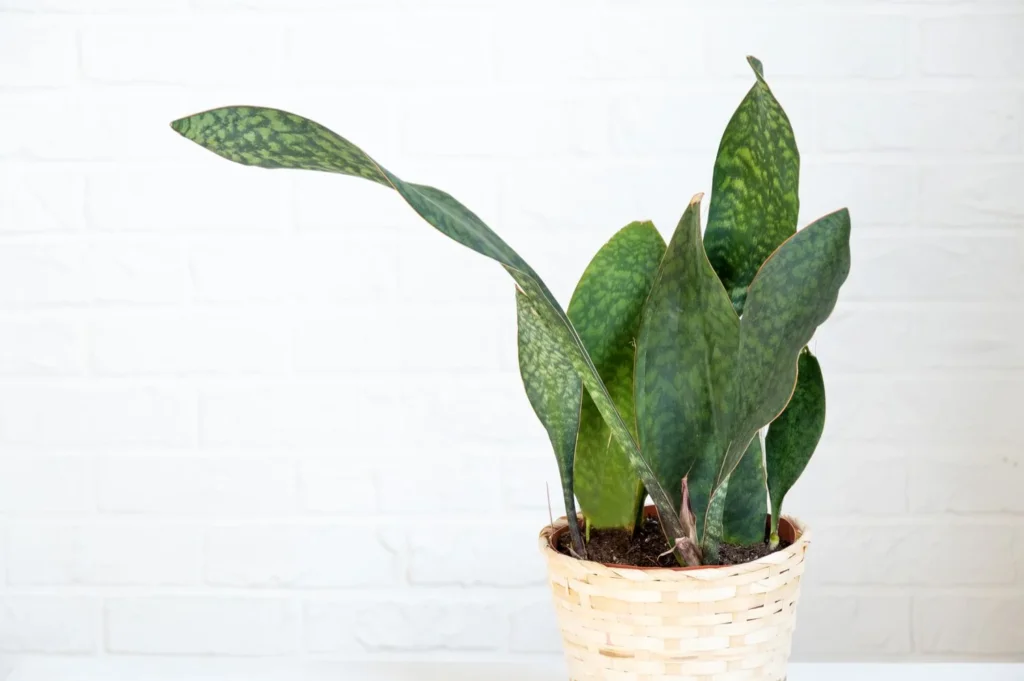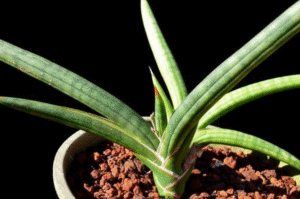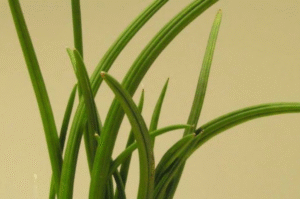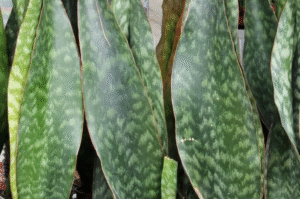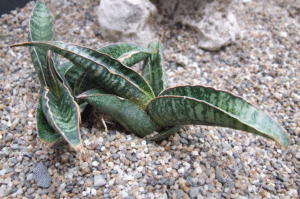If you’re a plant lover looking to add a bold, unique specimen to your indoor jungle, the Whale Fin Snake Plant (Sansevieria masoniana) might just be the perfect choice. Known for its massive, paddle-shaped leaf that resembles a whale’s fin breaching the ocean surface, this stunning succulent makes a statement even with a single leaf.
In this guide, we’ll walk you through everything you need to know to successfully grow and care for the Whale Fin Snake Plant, from planting and propagation to watering and troubleshooting. Let’s dive in.
What is the Whale Fin Snake Plant?
Scientific Name: Sansevieria masoniana
Common Names: Whale Fin, Shark Fin, Mason’s Congo, Paddle Plant
Family: Asparagaceae
Native to Central Africa, the Whale Fin Snake Plant is a rare variety of the Sansevieria genus. What sets it apart is its broad, oval-shaped leaf — often growing up to 10 inches wide and 3 feet tall, with mottled green patterns and a distinctive marbled look.
Its slow growth and dramatic appearance make it a popular choice for collectors and interior decorators alike. But don’t let its exotic look fool you — this plant is tough, low-maintenance, and perfect for both beginners and seasoned growers.
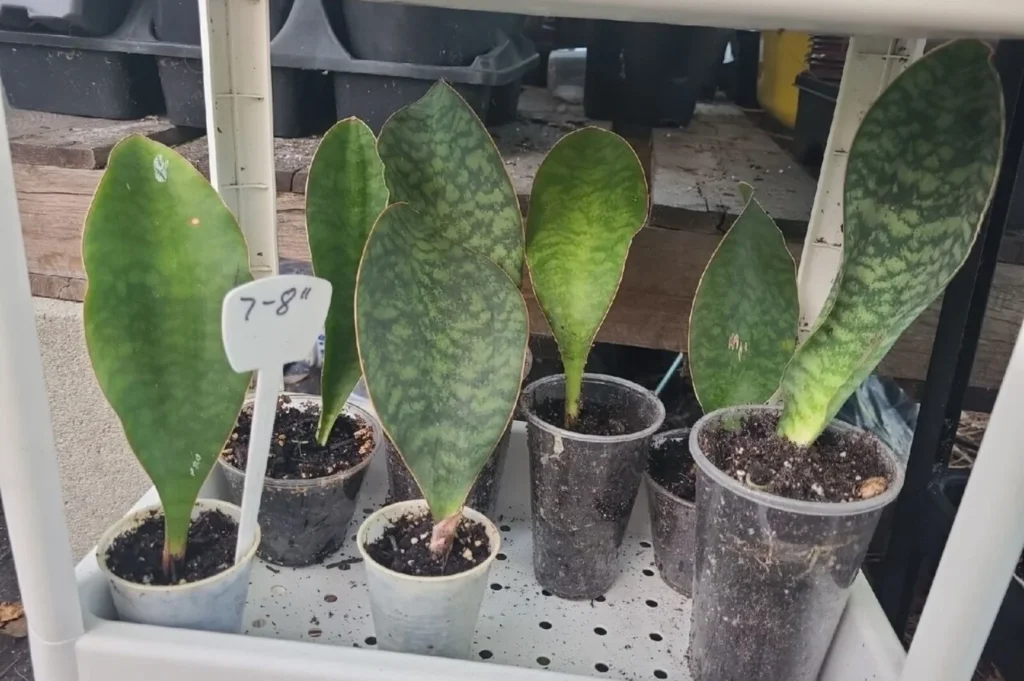
Why Choose a Whale Fin Snake Plant?
If you’re wondering whether the Whale Fin deserves a spot in your home or office, here’s what makes it worth every penny:
- Striking Visual Appeal: Its oversized single leaf adds architectural interest to any setting.
- Low Maintenance: Like most snake plants, it thrives on neglect and requires minimal care.
- Air-Purifying: Known for filtering out toxins like formaldehyde and benzene from indoor air.
- Tolerates Low Light: Ideal for apartments or offices with limited natural light.
- Long-Lasting: With proper care, this plant can live for decades.
How to Grow Whale Fin Snake Plant
Although slow-growing, the Whale Fin Snake Plant is incredibly resilient. Here’s a comprehensive look at how to set it up for success.
1. Choosing the Right Pot and Soil
Pot:
Pick a well-draining pot, preferably ceramic or terracotta with a drainage hole. Since this plant can become top-heavy, a sturdy base helps prevent tipping.
Soil:
Use a cactus or succulent mix, or make your own by combining:
- 2 parts potting soil
- 1 part coarse sand or perlite
- 1 part orchid bark or pumice
This ensures excellent drainage and prevents root rot — the #1 killer of Sansevierias.
2. Light Requirements
Whale Fin Snake Plant is flexible but thrives best in:
- Bright, indirect sunlight
It can tolerate low-light conditions, but growth will slow significantly, and its signature marbling may fade. - Avoid direct midday sun, which can scorch the leaf.
Pro Tip: Rotate the pot every few weeks to ensure even exposure and symmetrical growth.
3. Watering Schedule
Overwatering is the most common mistake plant owners make with the Whale Fin.
- Watering Frequency:
- Spring and Summer: Every 2–3 weeks
- Fall and Winter: Once a month or when the soil is bone dry
- Method:
Water thoroughly and let excess water drain out. Never let it sit in water.
Sign of Overwatering: Yellowing, mushy base, or root rot.
Sign of Underwatering: Wrinkling or drooping leaves, although this plant is drought-tolerant.
4. Temperature and Humidity
- Ideal Temperature: 65–85°F (18–29°C)
- Minimum Tolerance: 50°F (10°C). Below this, the plant may suffer damage.
- Humidity: Whale Fin does well in normal indoor humidity. No misting needed.
Tip: Avoid placing it near drafts, air vents, or cold windows in winter.
How to Propagate Whale Fin Snake Plant
Whale Fin propagation is possible, but patience is key. It’s slower than other Sansevierias.
Method 1: Leaf Cuttings in Soil
- Cut a healthy leaf from the base.
- Let the cut callous over for 1–2 days.
- Plant the cut end in dry, well-draining soil.
- Water sparingly until roots form (may take several weeks).
Note: Leaf cuttings may not retain the Whale Fin’s distinct pattern. Only rhizome division ensures true offspring.
Method 2: Rhizome Division
- Gently remove the plant from the pot.
- Locate and separate the rhizome (horizontal root) with a leaf attached.
- Replant in separate pots with fresh soil.
This method gives you a true Whale Fin replica
Fertilizing Tips
Whale Fin doesn’t need frequent feeding, but occasional nutrients help boost growth.
- When to Feed: During the growing season (spring and summer)
- How Often: Once every 4–6 weeks
- Type: Use a balanced, diluted succulent fertilizer (10-10-10 or 20-20-20)
Avoid fertilizing in fall and winter when the plant is dormant.
Common Problems and How to Fix Them
Even though the Whale Fin Snake Plant is low-maintenance, it’s not completely bulletproof.
1. Yellowing Leaves
Cause: Overwatering or poor drainage
Fix: Repot in well-draining soil and reduce watering frequency.
2. Drooping Leaf
Cause: Root rot, low light, or inconsistent watering
Fix: Check roots for rot and adjust lighting conditions.
3. Brown Tips
Cause: Low humidity or water with high fluoride/chlorine
Fix: Use filtered water and avoid placing near heating vents.
Whale Fin Snake Plant: Buying Guide
When purchasing a Whale Fin Snake Plant, here are a few things to look for:
- Single vs. Clustered Leaves: You’ll often find single-leaf cuttings sold. For a fuller look, opt for established clusters with multiple leaves.
- Color and Texture: Choose a leaf that’s firm with strong variegation — dull, wrinkled leaves may signal poor health.
- Source: Buy from reputable nurseries or online sellers specializing in rare houseplants. Check reviews and shipping policies.
Frequently Asked Questions
How fast does a Whale Fin Snake Plant grow?
It grows slowly, expecting only 1–2 new leaves per year under ideal conditions.
Can Whale Fin grow outdoors?
Only in USDA zones 10–12. Otherwise, keep it as a houseplant.
Is it safe for pets?
No. Like other Sansevierias, Whale Fin is mildly toxic to cats and dogs if ingested.
Conclusion :
Absolutely. While not the fastest grower, the Whale Fin Snake Plant is a showstopper with minimal maintenance needs. Its air-purifying qualities, sculptural form, and hardiness make it an excellent investment for plant lovers of all experience levels.
Whether you’re a beginner looking for a statement plant or a collector hunting for a rare gem, the Whale Fin is a smart, stylish, and satisfying addition to any home or office space.

